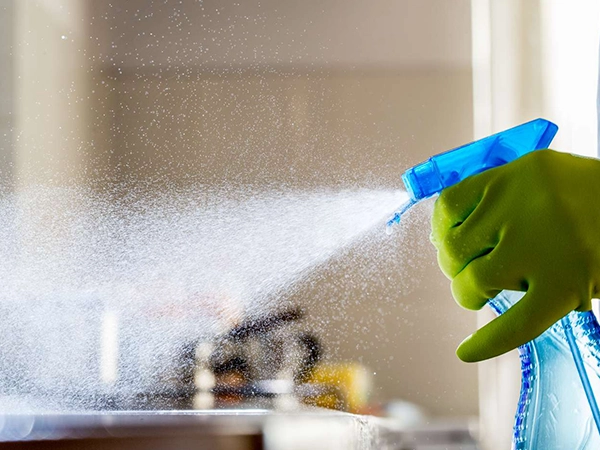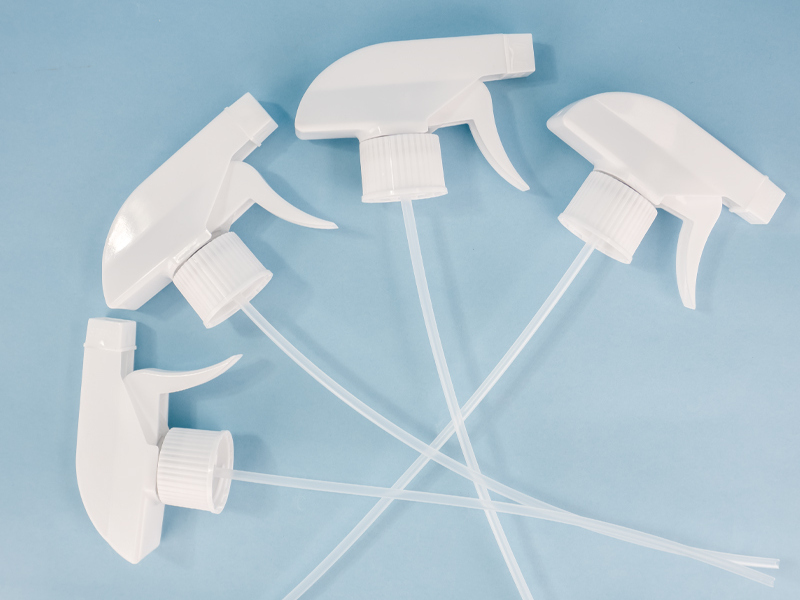Views: 26 Author: Site Editor Publish Time: 2025-09-09 Origin: Site












From the pocket sanitizer spray we use to clean hands on commutes, the travel perfume atomiser that keeps us fragrant during trips, to the basic spray bottlefor plant misting or household cleaning—these handy tools all rely on a simple yet clever mechanical principle to turn liquid into a fine spray. You might take their “spraying magic” for granted, but the science behind it is easy to understand once you break down the parts and steps. Below, we’ll unveil how spray bottles work, using common examples like travel pocket sprayer and travel perfume atomiser to make the science relatable.
Every spray bottle—whether it’s a small travel pocket sprayeror a large household cleaner bottle—has three key components that make spraying possible. These parts work together like a team, so let’s start by identifying them:
Reservoir (Liquid Tank): This is the main bottle part that holds the liquid. It’s usually made of plastic or glass (common in premium travel perfume atomiser models) and connects to the other parts via a tube.
Dip Tube: A thin, flexible tube that extends from the bottom of the reservoir up to the spray mechanism. Its job is to “suck” liquid from the reservoir—think of it like a straw, but instead of your mouth creating suction, the sprayer’s pump does the work. In a travel pocket sprayer, the dip tube is extra short to fit the compact reservoir.
Pump & Nozzle Assembly: This is the “brain” of the spray bottle. It includes a small pump (you press this with your finger) and a tiny nozzle (where the liquid sprays out). Inside the pump, there’s a valve (a one-way door) that controls the flow of air and liquid—this valve is crucial to the working principle.
The first action you take—pressing the pump on your spray bottle—starts the entire process. Here’s what happens in this step:
When you push down on the pump (whether it’s the small pump of a travel perfume atomiser or the larger one of a household sprayer), you squeeze the air inside the pump’s chamber. This squeezing reduces the volume of the chamber, which increases the air pressure inside it (this follows Boyle’s Law: when volume decreases, pressure increases, and vice versa).
The high-pressure air inside the pump chamber needs to escape—and the only way out is through the tiny nozzle. As the air rushes out of the nozzle, it creates a “vacuum” (low-pressure area) right at the end of the dip tube, which is connected to the pump.
Now that there’s low pressure at the top of the dip tube, the liquid in the reservoir (sanitizer, perfume, etc.) is “pulled” up. Here’s the breakdown:
The liquid in the spray bottle’s reservoir is under normal atmospheric pressure (the same pressure as the air around you). Since the top of the dip tube has lower pressure (from the rushing air), the higher atmospheric pressure on the liquid’s surface pushes the liquid up the dip tube to fill the low-pressure gap.
This is similar to how a straw works, but instead of your lungs creating suction, the sprayer’s pump creates the pressure difference. In a pocket sanitizer spray or travel pocket sprayer, the dip tube is short, so the liquid only needs to travel a small distance—making it easy to spray with a light press.
Once the liquid reaches the top of the dip tube and enters the pump chamber, it mixes with the rushing air—and the nozzle turns this liquid-air mixture into a mist. Here’s why the nozzle is so important:
The nozzle has an extremely small opening (often less than 1mm wide). When the liquid and high-pressure air pass through this tiny hole, they’re forced to speed up (this is called the “venturi effect,” where a narrow space increases fluid speed).
As the fast-moving liquid-air mixture exits the nozzle, it hits the surrounding air (which is at lower pressure). This sudden change in speed and pressure breaks the liquid into tiny droplets—creating the fine spray you see. In a travel perfume atomiser, the nozzle is designed to make extra-small droplets so the perfume spreads evenly and smells subtle (not overpowering).

After you press the pump and get your spray, releasing the pump resets everything so you can spray again. This step is key to making the spray bottle reusable:
When you let go of the pump, a small spring inside the pump (common in most sprayers, including travel pocket sprayer models) pushes the pump back up to its original position. This increases the volume of the pump chamber, which lowers the air pressure inside it again.
The one-way valve inside the pump then opens to let fresh air from the outside enter the chamber. This air replaces the space left by the liquid that was sprayed out, and it also pushes the next bit of liquid up the dip tube—ready for you to press the pump again.
In a pocket sanitizer spray, this reset happens quickly (thanks to a small, strong spring), so you can spray multiple times in a row without waiting.
You might notice that a travel perfume atomiser sprays a finer mist than a pocket sanitizer spray—this is because of small differences in the nozzle and pump design, not a different working principle. Here’s how design affects the spray:
Nozzle size: A travel perfume atomiser has a smaller nozzle opening than a pocket sanitizer spray. Smaller openings create smaller droplets, which are perfect for perfume (they spread evenly and don’t leave wet spots). Sanitizer sprayers have slightly larger nozzles to dispense more liquid quickly for effective cleaning.
Pump pressure: Premium travel perfume atomiser models often have a more precise pump that creates consistent pressure, leading to a smoother mist. Travel pocket sprayer models (which may hold sanitizer or water) have simpler pumps that prioritize ease of pressing over ultra-fine mist.
The next time you use your pocket sanitizer spray to clean your hands, spray your perfume before a meeting, or mist plants with a basic spray bottle, you’ll know exactly what’s happening: a simple pressure change (from pressing the pump) sucks liquid up a tube, mixes it with air, and pushes it through a tiny nozzle to create a spray. This principle works for every spray bottle—whether it’s a compact travel pocket sprayer or a large household one—proving that sometimes the most useful tools rely on the simplest science.
Understanding how spray bottles work also helps you take better care of them: if your travel perfume atomiser stops spraying, it might be a clogged nozzle (blocking the air/liquid flow) or a broken valve (failing to create pressure). A quick clean or valve check can often fix the issue—so you can keep using your favorite sprayers for longer.To learn more information about spray bottle,you can visit our website:https://www.packsubir.com.Contact us by 0086-574-88390029 or samuel@subircosmetics.com if you have any questions.